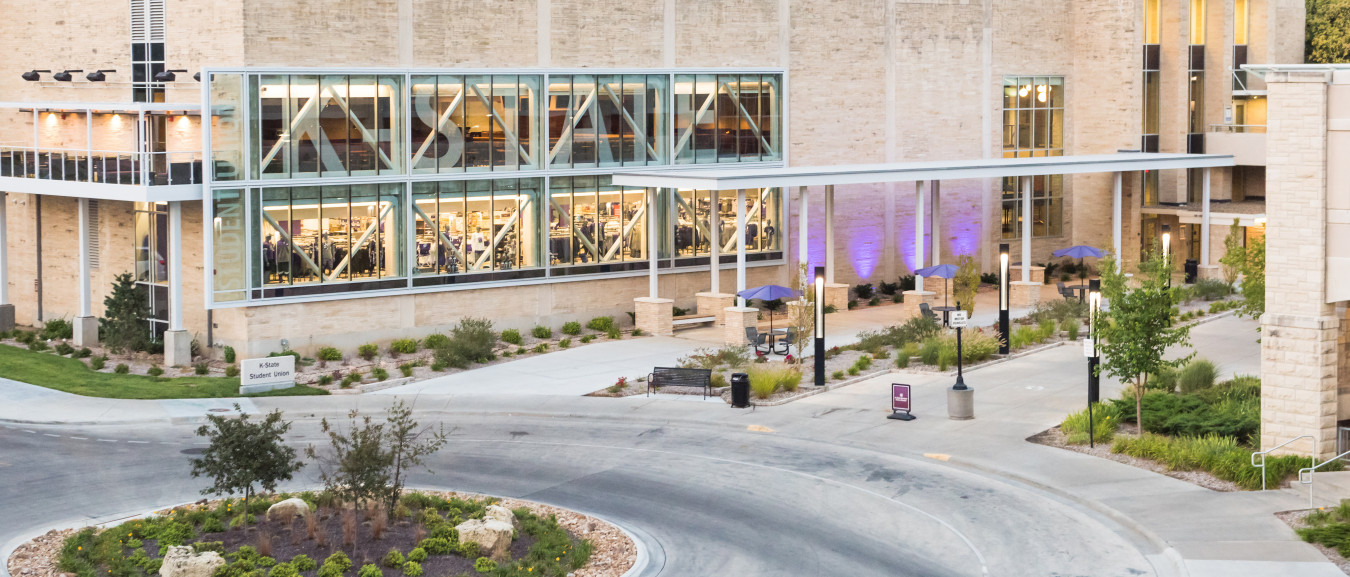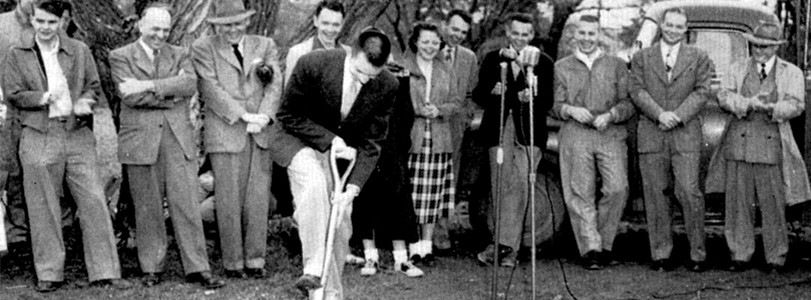The Dream
(1924-1954)
The decades between the 1920s and the 1950s will forever be known as a period of new ideas and expansion on the face of Kansas State Agricultural College (KSAC). Beginning in the early 1920s, a student movement was starting to take shape with the first mention of a facility for students, by students: a Student Union. During the Depression, three-fourths of the student body voted in a referendum, where 76 percent voted in favor of a $5 per semester Student Union fee, which started in 1941. But world, political and societal unrest would postpone such a building until its inception in 1947. The acquisition of army barracks, known by some as the Quonset huts, from the Herington Army Air Base would serve as the first Union and would stand until 1956. It offered students at K-State their first glimpse of a community center.
Highlights
- Student referendum passed
- Temporary barracks obtained
- Union Governing Board established
- Flood of 1951 refuge shelter
- Ground broken
| March 1926 | J.C. Christensen, an 1894 KSAC graduate and faculty member, advocated a union building for the KSAC campus to include faculty, officers, alumni and former students. |
| 1931 | Kansas State Agricultural College became Kansas State College of Agriculture and Applied Science. |
| 1935 | President Farrell appointed a committee of students and faculty to study ways and means of building a union on campus. |
| October 1936 | The University Council of Deans created a commission to promote a project for a student union building. |
| December 1937 | Student Council sent five delegates to the Association of College Unions (ACU) meeting at Purdue University to learn more about the role of the college union. |
| March 1938 | In the student referendum, 72.2 percent of the student body voted. Of those, 76 percent voted in support of funding a union via a Student Union fee. The approved fee was $5 per semester and $2.50 per summer session. |
| 1941 | Collection of the student union fee began. The Board of Regents approved locating the Union south of the Engineering Hall (Seaton). World War II delayed planning and construction. |
| January 1947 | A freshman poll showed that 98 percent of the class members interviewed favored the earliest possible use of Thompson Hall as a temporary student union. |
| October 1947 | Barracks, obtained from the Herington Army Air Base, was located north of the tennis courts (now the parking garage) and acted as the temporary student union. This facility remained open until the construction was completed on the permanent building in 1956. |
| November 1947 | Proceeds from "Jazz at the Philharmonic", a jazz concert presented in the college auditorium, benefited the temporary and permanent union. |
| 1950 | Union planning is again postponed due to the Korean War. |
| November 1950 | Porter Butts, Wisconsin Union director and student union consultant, spent time on campus with KSC President McCain discussing the idea of a union at K-State. |
| 1951 | During the Flood of 1951, the temporary Union building served as an area of refuge for those who were forced out of their homes. Meals were served in Thompson Hall. |
| 1951 | President McCain made it clear that the Union had top priority in new building constructions. He appointed a committee of five students and five faculty members to form a Union Planning Committee. |
| May 1953 | The Council for Student Affairs established the Union Governing Board. The first meeting of this board occurred on March 15, 1955, one year prior to the opening of the new building. |
| 1954 | The student union fee was increased to $12.50 per semester with $7.50 going toward bond retirement and $5 allocated for operations. |
| April 1954 | Gerald Shadwick, student body president, broke ground for the construction of the Union. John. B. Brown, a state architect, was the architect for the building. O.D. Milligan Construction Company was named the building contractor. The spade that was used for the groundbreaking was also used by President Dwight D. Eisenhower when he broke ground for Memorial Chapel in 1947. |


